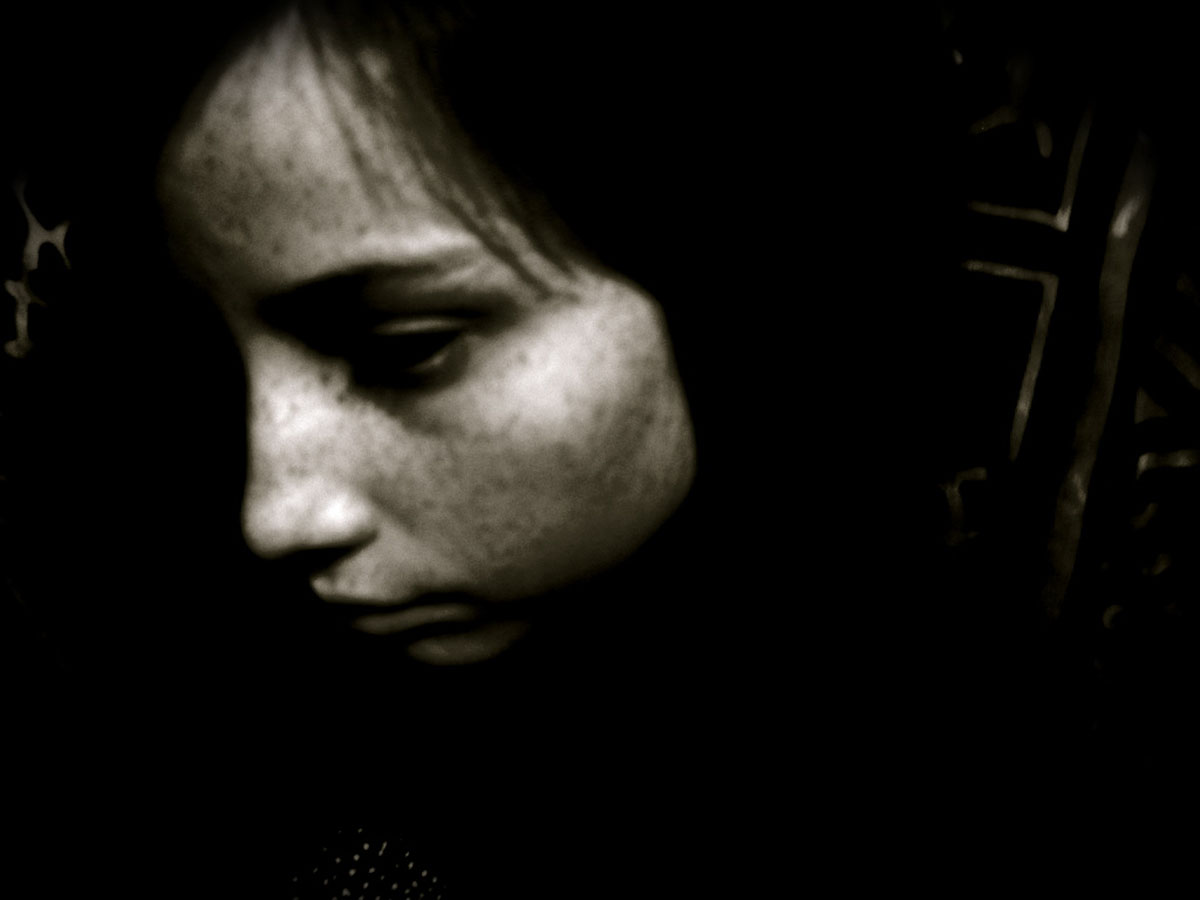Hundreds of millions of people around the world suffer from post-traumatic stress syndrome (PTSD) after they have been exposed to death or the threat of death. In the States and in many other countries, PTSD is most commonly associated with war, but it also can occur in someone who survived an armed robbery, in someone who has been raped, in the survivors of an industrial accident or a car crash, or in the survivors of a devastating earthquake, or in someone who went into remission after being told to expect death from cancer, among many other scenarios.

There are a variety of ways PTSD can come about:
- Directly experiencing a traumatic event, being the person who was threatened.
- Being present in person as other people are threatened.
- Learning that the traumatic event occurred to a family member or friend.
- Repeated first-hand exposure to the details of the traumatic event.
People with PTSD re-experience the event in flashbacks, in dreams, in obsessive thoughts, in dreams, illusions, delusions, hallucinations, or in intense reactions to things that remind them of the event. They then "deal with" their trauma by at least two of the following:
- Inability to remember the traumatic event.
- Persistent and exaggerated negative beliefs about themselves, others, or the world.
- Persistently negative emotions.
- Feelings of isolation or estrangement from others.
- Persistent inability to express positive emotions.
- Loss of interest in or failure to participate in important activities.
These ongoing negative feelings are accompanied by at least two changes in behavior:
- Angry outbursts.
- Hypervigilance, being always on the alert for a new traumatic event.
- Problems concentrating.
- Easily startled.
- Reckless behavior.
These behaviors last more than a month, cause their own distress, and are not due to a medical condition.
Although Americans tend to think of PTSD as something that occurs to soldiers who participated in wars, whole populations can experience PTSD where wars have been fought. About 18.5 percent of soldiers who served in Iraq or Afghanistan have PTSD (which means about 81.5 percent do not), but about 10 percent of the population who have not been in war suffer the condition. About 4 percent of boys and 6 percent of girls have experienced personal traumas that cause lasting psychological symptoms by the age of 18 in the United States. Many countries have higher rates of PTSD.
READ Post-Traumatic Stress Disorder (PTSD): Therapies & Meds
Some people are at higher risk for PTSD than others. Soldiers have an unusually high rate of the disease not just because of the horrors of war, but also because of the frequent concurrence of brain injuries. The war-related traumatic spectrum disorders encompass both emotional and physical causes of PTSD. The condition is also more common in people who have problems with opioid medications and in people who have insomnia even before the traumatic event. PTSD not caused by war is about twice as common in women as in men.
PTSD is persistent. About 1/3 of people who have it never recover. Without treatment, it takes on average 64 months, a little over 5 years, to regain normal emotional functioning. With treatment, it still takes about 3 years. Fortunately there are many medical and non-medical treatments for PTSD that help. None of these methods is completely curative all by itself, but each can help, sometimes substantially.
The Role For Alternative Medicine In Treating PTSD
Antidepressants and sleeping pills aren't the only methods known to relieve PTSD. Here are some other techniques that can augment what a medical doctor can do.
- A series of comprehensive scientific studies by the Samueli Institute confirm that acupuncture has sustained positive effects in PTSD. Acupuncture is particularly useful in managing pain, which makes PTSD much worse.
- Acupressure and progressive relaxation techniques bring on sleep. Progressive relaxation is particularly easy to learn. One simply tenses and relaxes muscles from feet to head in succession until one feels sleepy.
- Art therapy offers people who have been through trauma a way to express aspects of their experience they may find hard to put into words.

- Cognitive behavioral therapy (and a specialized kind of cognitive behavioral therapy known as cognitive processing therapy) give someone who has been trauma a renewed sense of control over events. The US military has created a virtual reality program called Virtual Iraq in which soldiers can replay common events in wartime with the ability to change their outcomes in order to break down feelings of helplessness. Although cognitive behavioral therapy is usually administered by a psychologist or social worker, there are some virtual reality programs available for at-home use. Cognitive behavioral therapy is considered a first-line treatment for PTSD, the first complementary therapy that should be attempted for the condition. Sometimes just a single session of cognitive behavioral therapy is enough to restore sleep patterns.
- Eye movement desensitization and reprocessing (EMDR) combines psychotherapy with directed eye movements that activate information processing in the brain. It has been used successfully in treating survivors of crime, sexual abuse, domestic violence, and war. EMDR doesn't get quick results, but it requires less time with a therapist or using a virtual reality simulator than cognitive behavioral therapy.
READ Surviving The Holiday Season When You Have PTSD
- Diet can make a difference in PTSD. People who suffer stress tend to have poor diets, and people who have poor diets tend to suffer stress. War, natural disasters, and disease make it hard to eat properly. There are a few "quicker" fixes in diet for coping with stress, such as increasing consumption of foods that contain the amino acid alanine, which include beans, nuts, seeds, brown rice, whole wheat, meat, fish, and egg whites. Making sure some of these foods are included in the diet at every meal is enough. The curcumin in turmeric seems to prevent reactivation of fear memories. You can get curcumin either as a supplement or from eating curry regularly. Getting more of the n-3 essential fatty acids found in fish and fish oil reduces anxiety. You only need 1,000 mg a day; more is not better. The body does not use the n-3 essential fatty acids found in microalgae and seed oils the same way as it uses the fatty acids found in fish.
- Meditation can help reduce avoidance behaviors. The more you meditate, the better.
- While most people play music to improve mood, it also relieves pain.
- There is no reason Reiki should work for reducing emotional distress in PTSD, except it often does. If the treatments are affordable or free, there is no reason not to pursue them.
- Yoga is useful not just for achieving physical calm but also in relieving chronic pain. It's not necessary to be able to perform poses the same way the instructor demonstrates them to get benefits from practice. Even yoga that is performed in a chair and simple breathing exercises (pranayama) can reduce ongoing stress. Yoga can be especially helpful in controlling "jitters" and racing heart.
READ Post-traumatic stress disorder (PTSD): Does Hypnosis Treatment Helps?
Everyone who has PTSD benefits from a holistic approach to treatment, but not everyone who has PTSD responds to alternative therapies the same way. Most of these methods are not well suited for treating small children who suffer PTSD. They are mostly useful for PTSD treatment in teenagers and adults. However, there is at least one complementary or alternative therapy for everyone who has PTSD that will do at least a little good, and sometimes greatly exceed expectations.
- Hollifield M, Sinclair-Lian N, Warner TD, Hammerschlag R. Acupuncture for posttraumatic stress disorder: a randomized controlled pilot trial. J Nerv Ment Dis. 2007 Jun. 195(6):504-13. PMID: 17568299.
- Photo courtesy of taqumi: www.flickr.com/photos/taqumi/6227012560/
- Photo courtesy of megyarsh: www.flickr.com/photos/megyarsh/2580891664/
- Photo courtesy of megyarsh: www.flickr.com/photos/megyarsh/2580891664/

